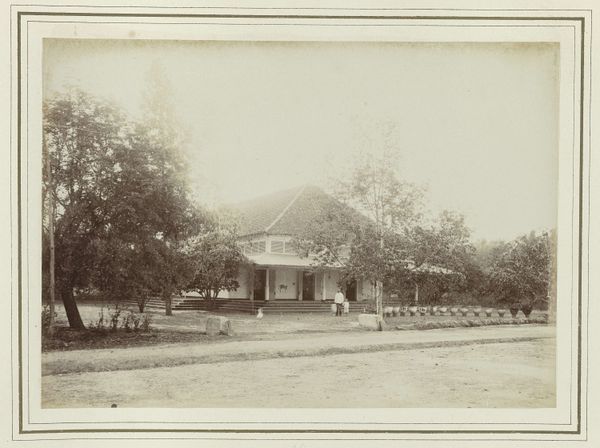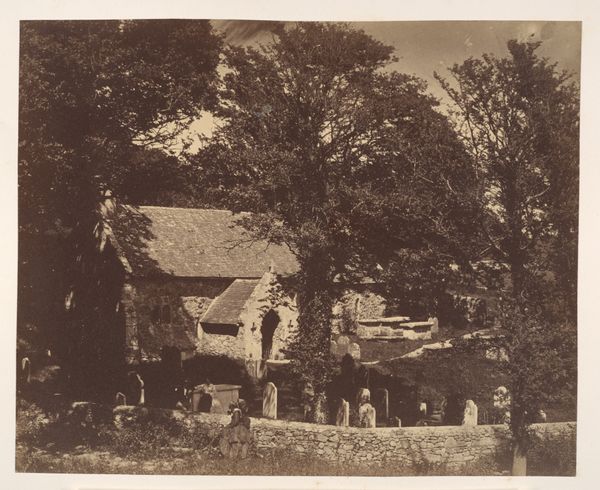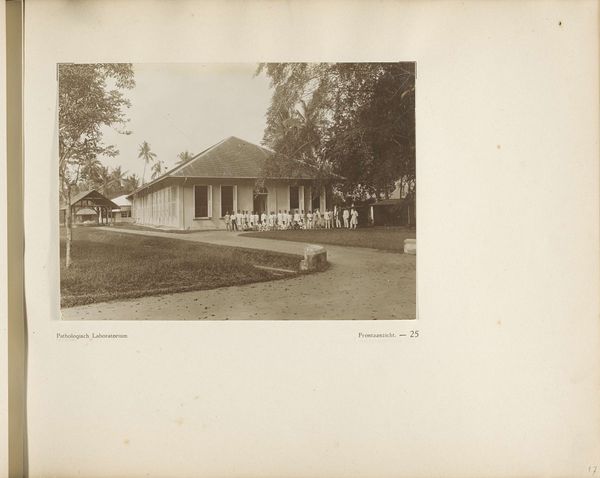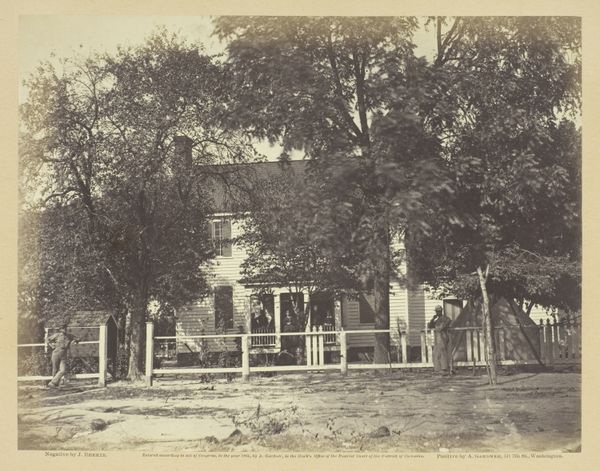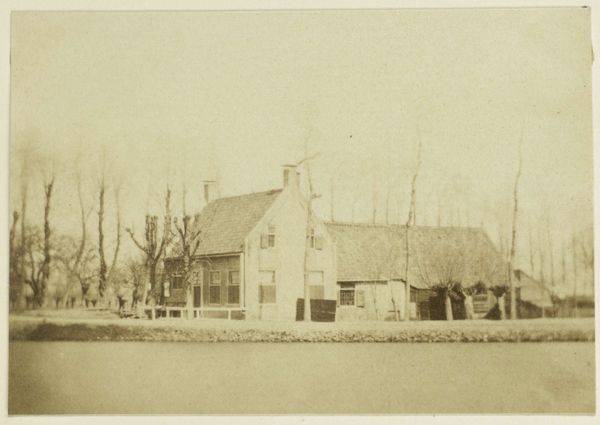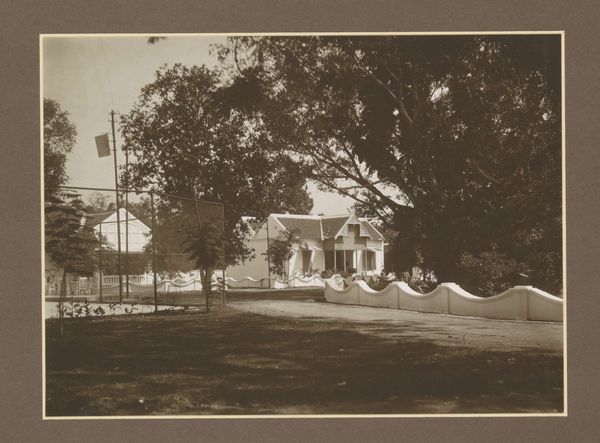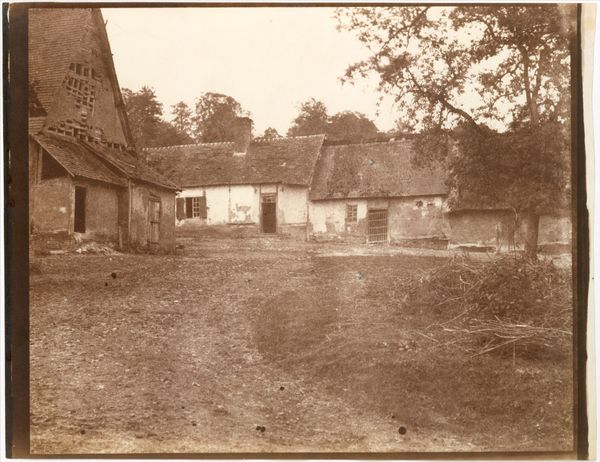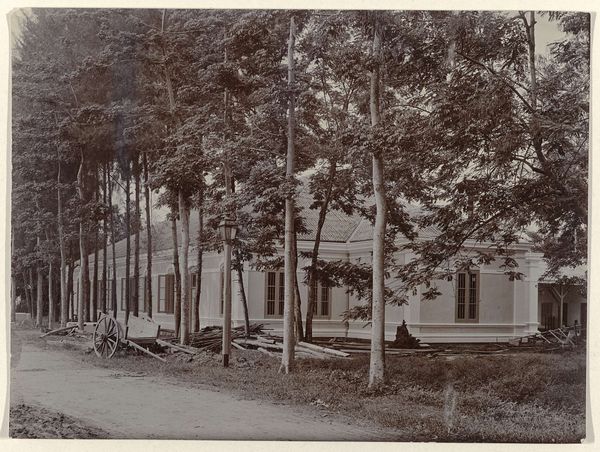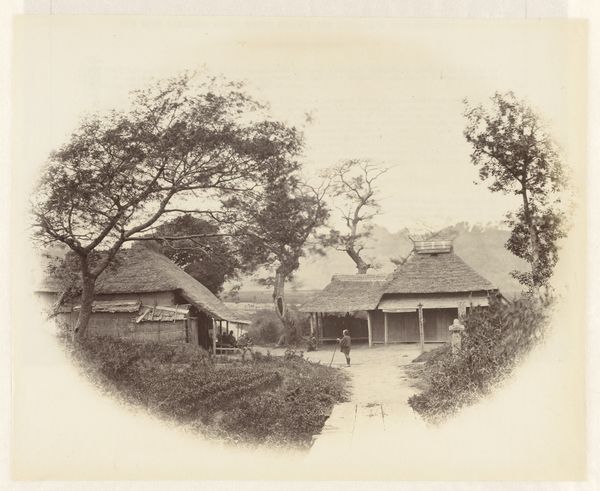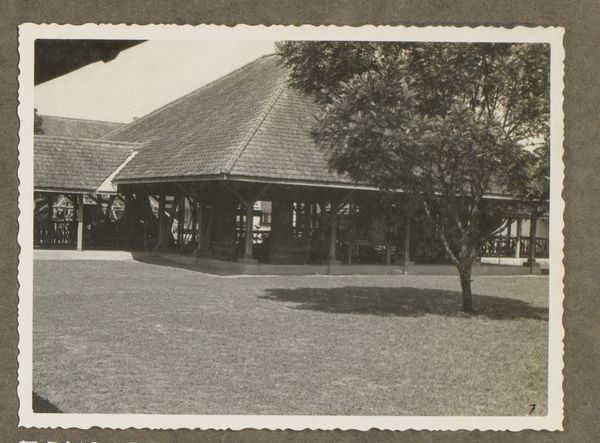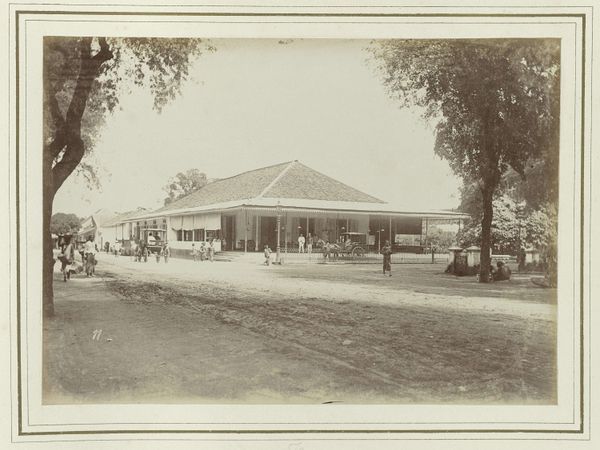
photography
#
16_19th-century
#
war
#
landscape
#
photography
#
united-states
#
realism
Dimensions: 5.6 × 8.9 cm (image); 6.2 × 10.4 cm (card)
Copyright: Public Domain
Curator: What strikes me most immediately is the sepia tone, lending an air of solemn antiquity to the scene. There's a certain weight in the image that evokes the past and ideas of nation-building. Editor: Yes, it’s an evocative image for sure, but my first reaction is centered on the material reality—this photograph of Washington's Headquarters in Newburgh. It seems aged and printed on some type of cardstock that likely shows its age. What can you tell us about its creation? Curator: The photograph, part of the Art Institute of Chicago's collection, unfortunately is undated, but likely produced during the 19th century. While the photographer is unknown, the site itself, Washington’s Headquarters, became symbolically crucial early in the history of the American project. The carefully composed landscape, centered on the house, presents a clear statement of national memory and continuity. Editor: Right. And understanding this as a photographic print opens some avenues for looking closer. The tones of light, captured by some earlier photographic process that could be further illuminated by its process. Even this little image—we need to also acknowledge it served a purpose and also carries a sense of commodification being reified with national ideals. Curator: Precisely. The material artifact is undeniably tied to larger currents of patriotism. Note the cannons positioned on the lawn—visible symbols of American military power and triumph during the Revolution, creating layers of visual symbols. Editor: And let's remember the labor involved. Producing photographs, especially then, involved craft knowledge and often grueling work. From preparing the light-sensitive materials to developing the final print. Even if a simple reproduction, it adds layers to the symbolism of it. Curator: Agreed. In observing this photo, I’m left pondering the ways a simple photographic image might stand as testament and continue national mythology. It gives physical and therefore emotional permanence to these formative times in early U.S. History. Editor: And for me, I leave thinking more about its reproduction and spread– and what sort of lives these objects take in different hands and in different places after production. A token, souvenir, lesson– who knows?
Comments
No comments
Be the first to comment and join the conversation on the ultimate creative platform.
